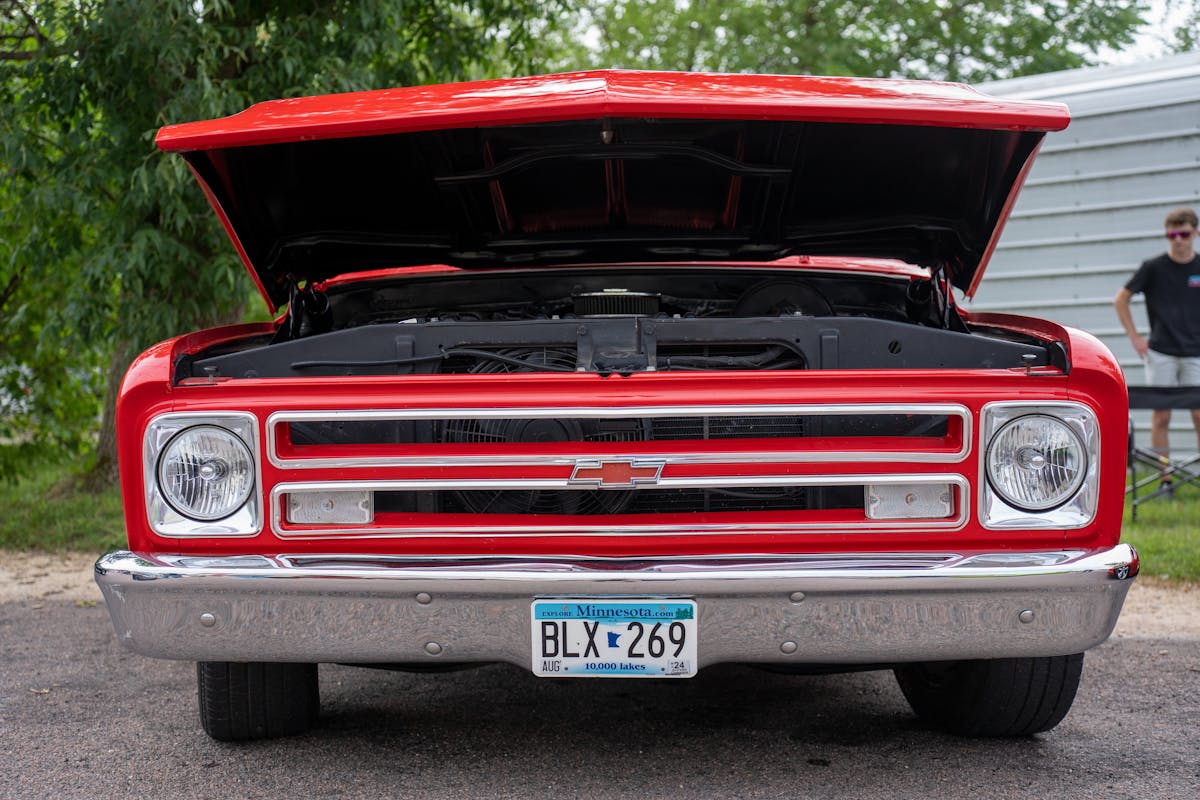The process of purchasing a used car can be a challenging experience, fraught with potential pitfalls. From overlooking essential vehicle history reports, bypassing pre-purchase inspections, to neglecting an all-encompassing test drive, these missteps can result in an unfavorable outcome. It’s also vital to reflect on the car’s market value, secure financing pre-approval, and factor in insurance costs. However, one of the most common yet overlooked mistakes is making a decision based solely on the car’s appearance. This discussion aims to shed light on these errors to guarantee you make a sound investment in your next vehicle.
Overlooking Vehicle History Reports
While it might seem tempting to skip the vehicle history report in the enthusiasm to purchase a used car, this could potentially lead to regrettable mistakes. The vehicle history report provides invaluable insights about the car’s past, serving as an essential tool in decision-making.
Accident reports, a part of the vehicle history, provide thorough data about any accidents the car has been involved in. They can highlight potential structural problems not immediately visible. Title issues, another significant aspect, can reveal if the car was ever salvaged, junked, or flooded. Uncovering such issues can save you from unforeseen legal complications.
Maintenance records and service history offer a glimpse into how well the previous owner(s) took care of the vehicle. Regular maintenance indicates a better-kept vehicle, likely to have fewer problems down the road. Ownership history helps verify the legitimacy of the seller and can raise red flags if the car has changed hands frequently.
Mileage verification guards against odometer fraud, ensuring you pay a fair price for the vehicle. Recall information is also vital, as it informs about any manufacturer defects that might affect the car’s safety or performance. As a result, overlooking the vehicle history report can prove costly, underscoring its importance in buying used cars.
Ignoring Pre-Purchase Inspections
One of the most critical oversights when purchasing a used car is disregarding the pre-purchase inspection. A thorough vehicle inspection is essential as it can identify potential mechanical issues, safety concerns, and areas that may require costly repairs in the future. View it not as an unnecessary expense, but a smart investment that could save you from significant financial loss and stress down the line.
Importance of Vehicle Inspections
Often, prospective used car buyers overlook the essential step of a pre-purchase inspection. They may be swayed by the exterior shine or a smooth test drive, failing to understand the inspection benefits that lie beneath surface observations. A thorough vehicle inspection is a fundamental part of the used car buying process which can protect buyers from potential long-term headaches and hefty repair bills.
The importance of vehicle inspections cannot be overstated. It provides an expert, unbiased evaluation of the car’s mechanical, safety, and cosmetic condition. As a potential buyer, you have the right to know the exact state of the vehicle you are considering. The inspection can reveal hidden issues that may not be noticeable during a quick test drive, including problems with the engine, transmission, brakes or other critical components.
When it comes to the inspection frequency, it’s recommended that every used car undergo a pre-purchase inspection. Even if the seller provides a detailed service history, an independent inspection will validate their claims and confirm you’re not inheriting someone else’s problems. It’s a small investment that can save you from a significant financial and emotional burden in the long run.
Risks of Ignoring Inspections
What could be the consequences of skipping an essential step like a pre-purchase inspection when buying a used car? The risks are manifold, starting with potential mechanical issues that could cost a fortune to fix. Unseen problems under the hood may not only pose safety concerns but also have significant financial implications.
Without an inspection, the buyer may remain unaware of the car’s maintenance history. This ignorance may lead to unexpected repairs that can drastically affect the resale value of the car. Overlooking the inspection also means missing out on important negotiation strategies. An inspection report can reveal critical information, empowering the buyer to negotiate for a better price.
Additionally, warranty options can be compromised. Dealerships often offer warranties based on the condition of the car, determined through inspections. Ignoring this step can, consequently, limit these options. Ignorance about the dealership’s reputation, owner reviews, or repair records further exacerbates these risks.
Inspection: A Wise Investment
While it may seem tempting to skip the pre-purchase inspection to save time or money, it is certainly a wise investment when buying a used car. This thorough examination conducted by a professional can uncover hidden issues and potential future problems.
Mechanic recommendations should be sought when choosing an inspector. A skilled and experienced mechanic will have the knowledge to thoroughly inspect the vehicle and provide an accurate report on its condition. Additionally, they can help you understand the implications of any identified issues and how they might affect the car’s performance and your finances in the long run.
The use of inspection checklists is also essential in this process. This list prompts the mechanic to examine specific parts of the car, ensuring no significant area is overlooked. It typically covers aspects like the engine, transmission, brakes, tires, and interior and exterior features.

Neglecting to Test Drive
One critical error prospective buyers often commit is neglecting to test drive a used vehicle before purchase. A test drive serves as a practical evaluation of the car’s performance, allowing potential issues to become apparent. This section will discuss the importance of test drives, common errors made during this process, and how to accurately assess the vehicle’s drive performance.
Importance of Test Drives
Despite the excitement that accompanies the purchase of a used car, it is essential not to overlook the importance of a test drive. The test drive serves as a practical and highly effective tool for evaluating the car’s condition and performance. It brings to light potential issues that may not be immediately apparent from a visual inspection or dealer’s description, notably contributing to the test drive benefits.
Under ideal test conditions, here are three reasons why a test drive is vital:
- Identification of Underlying Issues: A test drive can reveal problems such as strange noises, weak brakes, or engine troubles, which might be costly to fix later on.
- Comfort Assessment: It provides an opportunity to check if the car suits your driving style and comfort preferences, including seat comfort, visibility, and ease of maneuvering.
- Performance Evaluation: Test drives allow you to assess the vehicle’s performance on roads similar to those you regularly use. This can help evaluate the car’s acceleration, suspension, and handling abilities.
Common Test Drive Errors
In the quest to acquire a used car, many prospective buyers often make the error of neglecting to conduct a thorough test drive. This common mistake can lead to a series of problems post-purchase, as some issues only become apparent when the vehicle is in motion.
One of the primary errors is not having a test drive checklist. This list should include key components to evaluate, such as the brakes, steering, transmission, and other essential parts. Ignoring to have one can result in missing out on subtle signs of potential problems.
Another common mistake is not paying attention to the handling feedback. The car’s handling gives significant insight into its condition. For instance, if the vehicle swerves, it might point towards an alignment problem. Similarly, a jumpy ride could indicate issues with the suspension. Neglecting these signs can lead to expensive repairs in the future.
Lastly, many buyers rush the test drive or let the seller dictate the route. It’s important to take your time and test the car in various conditions – city driving, highway speeds, and different terrains if possible.
Evaluating Drive Performance
Negligence in evaluating drive performance is a vital mistake when purchasing a used car. It’s important to understand that a car’s overall performance metrics are the backbone of its functionality and longevity.
- Engine Responsiveness and Acceleration Smoothness: A responsive engine and smooth acceleration testify to the car’s health. Lag in response or jerky acceleration indicate issues.
- Handling Characteristics, Steering, and Road Feedback: Handling characteristics are a measure of the car’s stability and maneuverability. Assess steering feedback and road feedback during a test drive to gauge the car’s handling ability.
- Braking Efficiency, Noise Levels, and Tire Condition: Braking should be smooth, and noise levels minimal. Check the tire condition for wear and tear as it impacts driving comfort.
Evaluating these metrics guarantees the car’s performance aligns with your expectations. Overlooking these aspects can lead to regrettable purchases. So, remember, when buying a used car, give due importance to drive performance, from engine responsiveness to braking efficiency, tire condition, handling characteristics, and driving comfort. The car’s acceleration smoothness, noise levels, steering, and road feedback are equally vital. By considering all these factors, you can make an informed purchase and enjoy a satisfying driving experience.
Not Checking Car’s Value
One significant mistake often made by prospective buyers of used cars is failing to verify the vehicle’s market value. This vital step in the buying process involves thorough market research to ascertain the vehicle’s worth and potential resale value.
In-depth market research entails comparing similar vehicles regarding age, mileage, condition, and features. Factors such as demand and supply, geographical location, and economic conditions can influence a used car’s market value. This research provides a benchmark, helping you assess whether the seller’s price is reasonable or inflated.
Failing to understand the car’s resale value can lead to a bad investment. The resale value indicates the amount a vehicle may fetch when sold in the future, heavily influenced by factors such as the car’s brand, model, age, condition, and market demand. A car with a high resale value is typically a safer investment, preserving your financial resources over time.
Therefore, performing diligent market research and considering the resale value are essential steps in the used car buying process. These steps can help protect you from overpaying and guarantee a sound investment, ultimately enhancing your overall satisfaction with your purchase.
Skipping Financing Pre-Approval
Continuing on the topic of common oversights in purchasing a used car, lack of financing pre-approval stands as a significant pitfall. This misstep can lead to unfavorable loan terms, limited financing options, and potentially, a higher purchase price.
Prior to stepping onto a dealership lot, potential buyers should seek pre-approval from their bank or credit union. This not only establishes a realistic budget but also provides a baseline for comparison when evaluating dealership financing options.
Here are three compelling reasons why skipping financing pre-approval could be detrimental:
- Inflated Purchase Price: Without pre-approval, you may end up accepting dealer-set financing, which could result in an inflated overall cost due to higher interest rates.
- Unfavorable Loan Terms: Lenders might offer unfavorable loan terms, such as extended repayment periods or high-interest rates, if you lack pre-approval.
- Limited Financing Options: Without pre-approval, your financing options become limited to what the dealer offers, potentially eliminating better deals from other lenders.
Forgetting About Insurance Costs
While many consumers duly consider the upfront costs of purchasing a used car, the ongoing expense of insurance is often overlooked. This can lead to a serious miscalculation in the total cost of ownership, possibly making what seemed like a bargain into a financial burden. Each car make and model carry different insurance premiums, determined by factors such as the vehicle’s safety rating, its likelihood of theft, and overall repair costs.
It’s essential to remember that used vehicles may have higher insurance costs due to their age and potential for needed repairs. In addition, coverage options can considerably impact the final cost. Choosing between comprehensive, collision, or liability coverage requires a careful evaluation of your financial situation, driving habits, and risk tolerance.
To avoid any unpleasant surprises, it’s wise to research insurance costs before finalizing your purchase. Contact several insurance companies for quotes, using the specific make, model, and year of the car you’re considering. This proactive approach will give you a realistic picture of the ongoing costs associated with your potential used car, helping you make a more informed decision.
Buying Based on Appearance Only
A shiny exterior or plush interior can easily capture a buyer’s attention, but relying solely on a used car’s appearance is a common pitfall. It is crucial to understand that aesthetic appeal often triggers emotional buying, blinding potential owners to deeper, more costly issues.
Beneath the allure of sparkling paint and leather seats, there may lurk mechanical problems, hidden damages, or a history of accidents. These are elements that can drastically affect the lifetime and performance of the vehicle, often leading to unforeseen expenses.
Now, let’s consider three key aspects to remember:
- Look beyond the surface: An attractive exterior can hide serious mechanical faults. Always have a trusted mechanic inspect the car before purchase.
- Don’t let emotions rule: Emotional buying often leads to regret. Make decisions based on facts, not feelings.
- History matters: A car’s history report can reveal past accidents or damages, giving a clearer picture than what meets the eye.
Frequently Asked Questions
What Are Some Reliable Platforms to Buy Used Cars?
Reliable platforms for purchasing used cars include reputable online marketplaces and certified dealers. These platforms offer extensive selection, transparency, and often provide vehicle history reports for buyer confidence and satisfaction.
How Can I Verify the Authenticity of the Cars Documents?
To verify the authenticity of a car’s documents, conduct a thorough document verification including a title check. Consult with the local Department of Motor Vehicles or use online services like Carfax for detailed vehicle history reports.
Are There Any Specific Signs of a Fraudulent Car Deal?
Signs of a fraudulent car deal may include scam warnings such as suspiciously low prices, inconsistent vehicle history reports, and pressure to complete the transaction quickly. These are significant price red flags to contemplate.
What Are Some Common Hidden Costs in Used Car Purchases?
Common hidden costs in used car purchases often include insurance costs, which may be higher for certain models, and maintenance fees, which can accumulate rapidly if the vehicle has not been properly maintained.
How Frequently Should I Service a Used Car Post-Purchase?
Post-purchase maintenance of a used car should ideally occur every 4 to 6 months, depending on the vehicle’s condition and usage levels. Regular servicing guarantees peak performance and early detection of potential mechanical issues.

